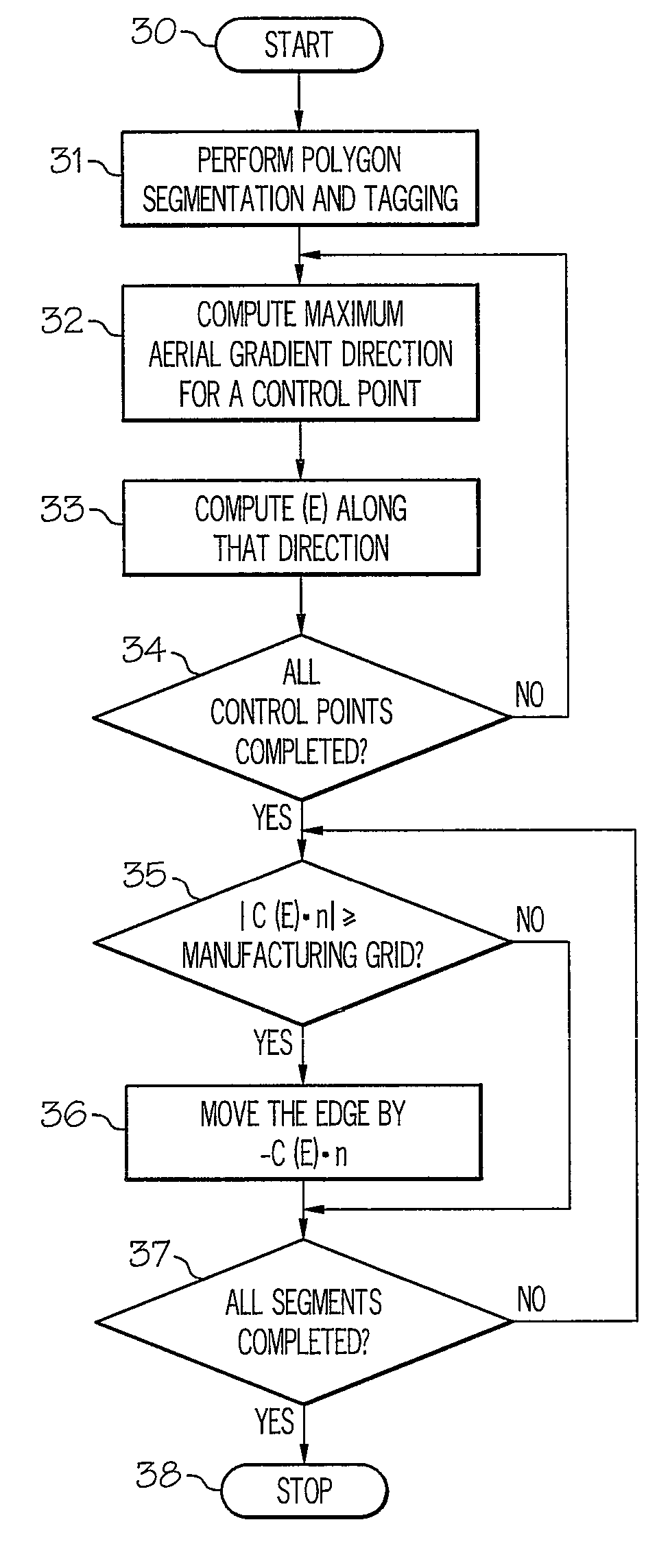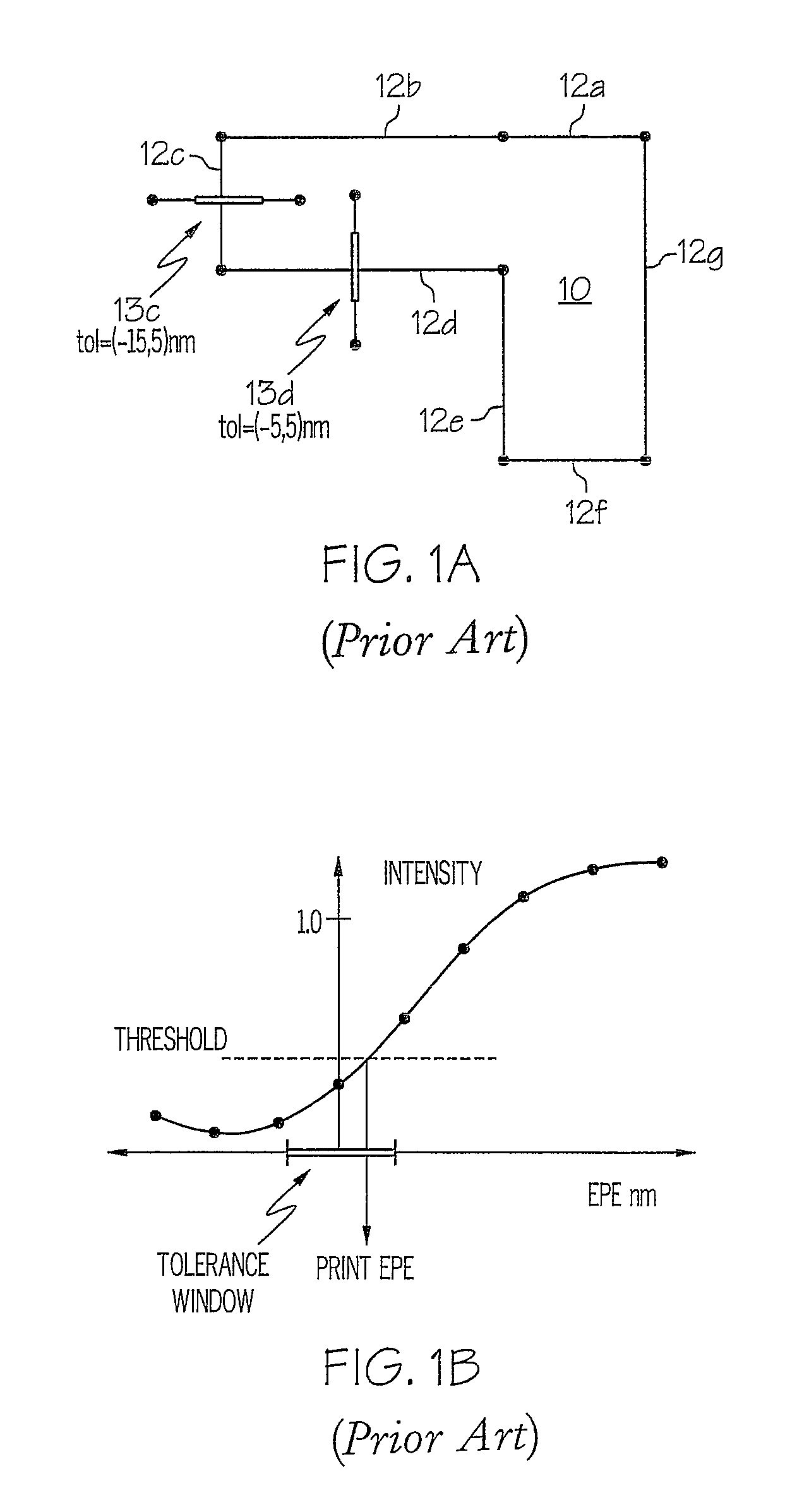Method and system for performing optical proximity correction with process variations considerations
a technology of optical proximity and process variation, applied in the field of photolithographic printing, can solve the problems of distortion, incompatibility of objects formed on the wafer, and the number of circuit elements to be produced on the wafer becoming increasingly large and correspondingly smaller
- Summary
- Abstract
- Description
- Claims
- Application Information
AI Technical Summary
Problems solved by technology
Method used
Image
Examples
Embodiment Construction
[0022]With reference now to FIG. 2, there is depicted a block diagram of a computer system in which a preferred embodiment of the present invention is incorporated. As shown, a computer system 20 includes a processing unit 21 connected to a display 25, a keyboard 26 and a mouse 28. Instructions used by processing unit 21 to implement the optical proximity correction technique of the present invention are received on a computer readable media 23 or can be received as a communication signal from a remote computer over a wired or wireless data link. Processing unit 21 receives a target layer description that defines a number of circuit elements to be manufactured on a semiconductor wafer. The target layer description is received on a computer readable media 22 or can be received from a remote computer over a wired or wireless data communication link. Processing unit 21 generates a mask layout description of one or more lithographic masks that will be used to expose desired portions of ...
PUM
 Login to View More
Login to View More Abstract
Description
Claims
Application Information
 Login to View More
Login to View More - R&D
- Intellectual Property
- Life Sciences
- Materials
- Tech Scout
- Unparalleled Data Quality
- Higher Quality Content
- 60% Fewer Hallucinations
Browse by: Latest US Patents, China's latest patents, Technical Efficacy Thesaurus, Application Domain, Technology Topic, Popular Technical Reports.
© 2025 PatSnap. All rights reserved.Legal|Privacy policy|Modern Slavery Act Transparency Statement|Sitemap|About US| Contact US: help@patsnap.com



